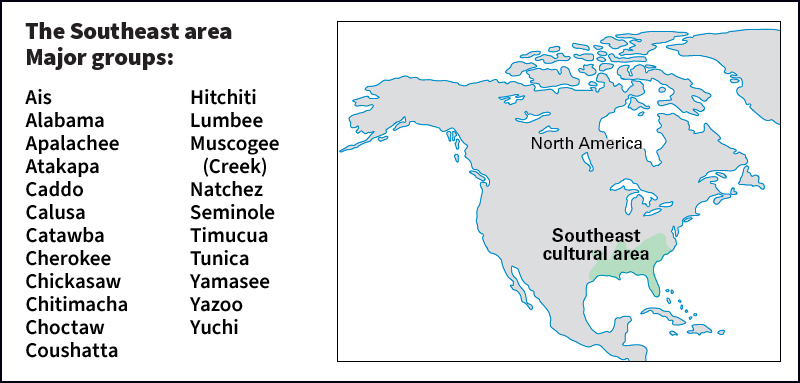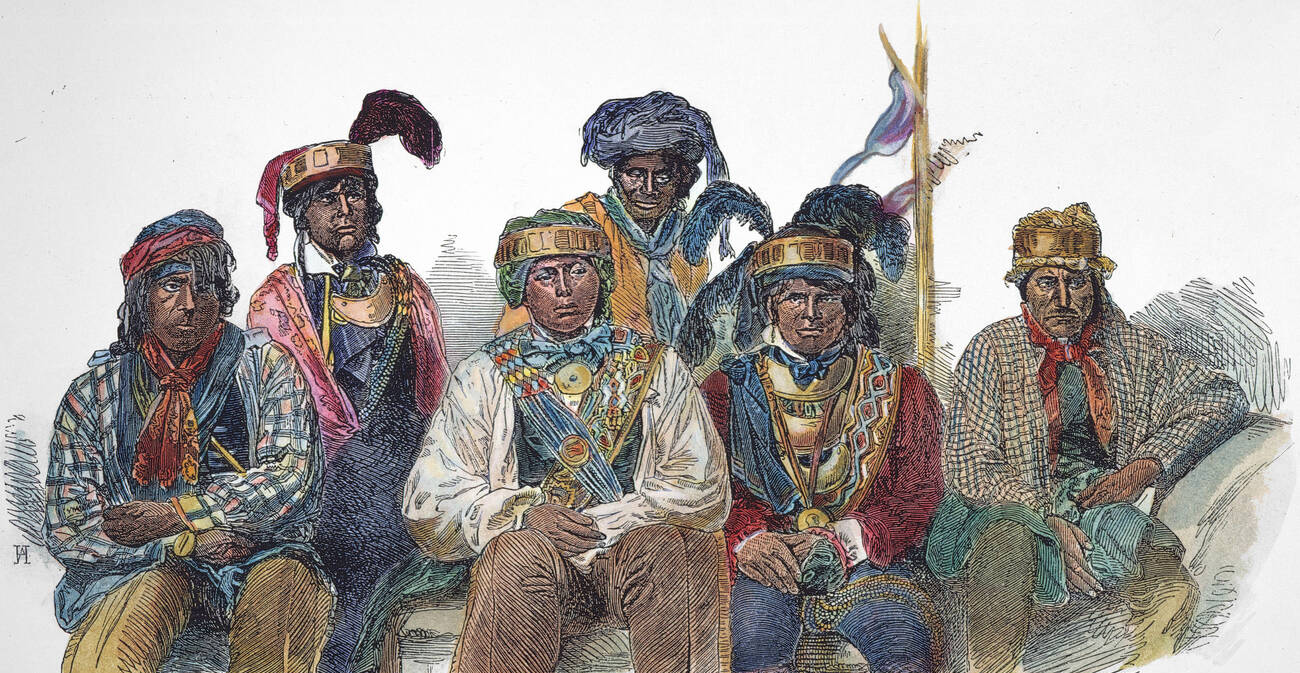Seminole, << SEHM uh nohl, >> are a Native American group that fought to keep their lands in Florida during the 1800’s. They opposed United States government troops and local militia sent to force them west to Indian Territory (now Oklahoma).

Some Seminole spoke the Muskogee language. They originally belonged to the Creek confederation of tribes, and lived in what are now Alabama and Georgia (see Creek). During the 1700’s, they moved into Florida, then occupied by the Spanish. These people shared the area with another Indigenous (native) group, who spoke the Mikasuki language. Together the two groups became known as Seminole, meaning runaways. The British took Florida in 1763 and often incited the Seminole against American settlers. Black people who escaped from slavery sometimes found safety with the Seminole. For these reasons, Americans fought against the Seminole in the First Seminole War (1817-1818), which took place in southern Georgia and in Florida. In 1818, forces under Andrew Jackson quickly defeated the Seminole.

The United States acquired Florida in 1819, and began urging Indigenous groups there to leave their lands and relocate to Indian Territory along with other southeastern tribes. Some Seminole leaders signed a treaty in 1832, and part of the tribe moved. They became one of the Five Civilized Tribes (see Five Civilized Tribes). But other Seminole refused to recognize the treaty, and they fled into the Florida Everglades. The Second Seminole War, fought to force the Seminole west, began in 1835 and lasted seven years. It cost the United States about 1,500 men and more than $20 million. Osceola led the Seminole until he was tricked into discussing peace terms under a flag of truce. Instead, General Thomas Jesup ordered U.S. troops to seize and imprison him. Osceola died in prison in 1838 (see Osceola). Although many Seminole finally agreed to move west, a small group remained in the Everglades.
A Third Seminole War broke out in 1855, when conflict arose between white Floridians and some of the Seminole who had remained in Florida. The war ended in 1858, when the Seminole agreed to move west. In 1970, the Indian Claims Commission awarded the Seminole $12,347,500 for the land taken away from them by United States military forces.
According to the 2020 U.S. census, there are about 12,000 Seminole. Many Seminole have small farms in Oklahoma. Seminole people in Florida make a living by hunting, fishing, farming, raising cattle, or working in tourism or other industries. For many years, some Seminole lived in palm-thatched huts called chickees. These open shelters stand on platforms raised above the ground.
See also Black Seminole; Florida (Territorial days).
